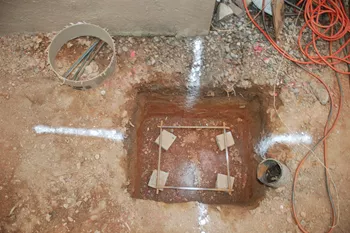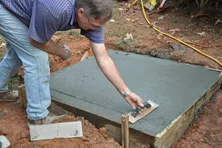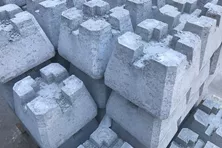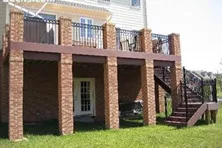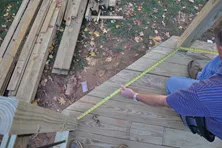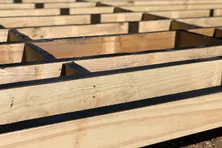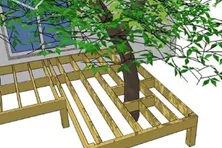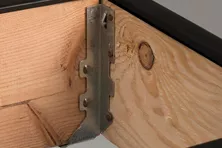Soil Conditions For Deck Footings
Before you can calculate the size of your footings, you will need to know what kind of soil is present in your yard. Most soils can be classified into three categories: gravel, sand and clay.
Gravel: This type is primarily composed of small stone pebbles that you can see easily with the naked eye. Gravel feels rocky. You cannot roll this soil into a ball. Gravel will drain water very easily and can support the greatest amount of load (3000 lbs/sq ft).
Sand: Sand is composed of tiny particles that are difficult to see with the naked eye. Most sand is tan or white in color. Sand has a rough gritty texture. If you try to roll sand into a ball, it will not hold its shape. If you add water to sand, it will run through very quickly. Sand can support a load of 2000 lbs/sq ft.
Clay: You cannot see clay particles without a strong magnification. Clay feels sticky and can easily be rolled into a ball. It doesn’t drain water very easily. Clay can be many different colors depending on what other minerals it is mixed with. It is the weakest common soil type supporting a load of 1500 lbs/sq ft.
If you are unsure what soil type you will be working with, always use the worst case scenario, which is clay, to make your calculations.
Cutting a Concrete Pad
Learn how to use a concrete saw to cut a hole in a patio slab to install a deck footing.
Working With Concrete
Learn tips from the pros on how to mix and pour concrete for deck footings.
Can I use pier blocks?
Our inspector explains the pros and cons of using pier blocks for deck foundations.
How to Decorate Deck Support Columns
Browse some examples of decorative deck support posts for tall decks.
How to Angle Corners and Joists
Learn how to frame a deck with angled or clipped 45-degree corners using a cantilever beam.
How To Build a Hexagon Deck
Learn some tips on how to build a six-sided hexagon-shaped deck.
More Helpful Resources
Explore Articles by Topic

Footings
Information related to installing frost footings for decks

Framing
Learn structural framing methods

Decking
Learn about wood and composite decking materials

Stairs
An in-depth look at the complex issue of how to build stairs

Railings
How to install guardrails and handrails to meet IRC code

Features
An overview on water drainage, benches, planters and lights

Design
The basics of deck design

Planning
Learn about permits and working with contractors

Porches & Patios
Build a covered deck to enjoy all seasons

Ledger
Proper attachment techniques

Care
Maintain your deck to maintain your investment

Materials
An overview on water drainage, benches, planters and lights
How many footings do I need?
Avoid a wobbly deck! Learn how to calculate the right number of footings to keep your structure safe and solid.
Footing Size
You don’t need to be an engineer to figure out what size footings your new deck will need to safely support it. Everything you need to know is right here.
Deck Bracing
Learn how to install knee bracing in-between your deck support posts to provide extra strength against high winds and to prevent racking forces for tall decks.
Why is Joist Protection so Important for Your Deck?
If you’ve ever seen a piece of wood left out in the weather for any period of time, you know what happens: decay. Whether through wet rot, insect damage, or mildew, the fibers begin to break down.
Building a Deck Around a Tree
Learn how to build a deck around a tree to allow the tree to grow and not damage its root system while digging footings.
Deck Joist Water Protection
Learn about a technique used by many pro builders for wrapping deck framing lumber with a waterproof barrier to prevent corrosion and rot.
Explore Articles by Topic

Footings
Information related to installing frost footings for decks

Framing
Learn structural framing methods

Decking
Learn about wood and composite decking materials

Stairs
An in-depth look at the complex issue of how to build stairs

Railings
How to install guardrails and handrails to meet IRC code

Features
An overview on water drainage, benches, planters and lights

Design
The basics of deck design

Planning
Learn about permits and working with contractors

Porches & Patios
Build a covered deck to enjoy all seasons

Ledger
Proper attachment techniques

Care
Maintain your deck to maintain your investment

Materials
An overview on water drainage, benches, planters and lights




